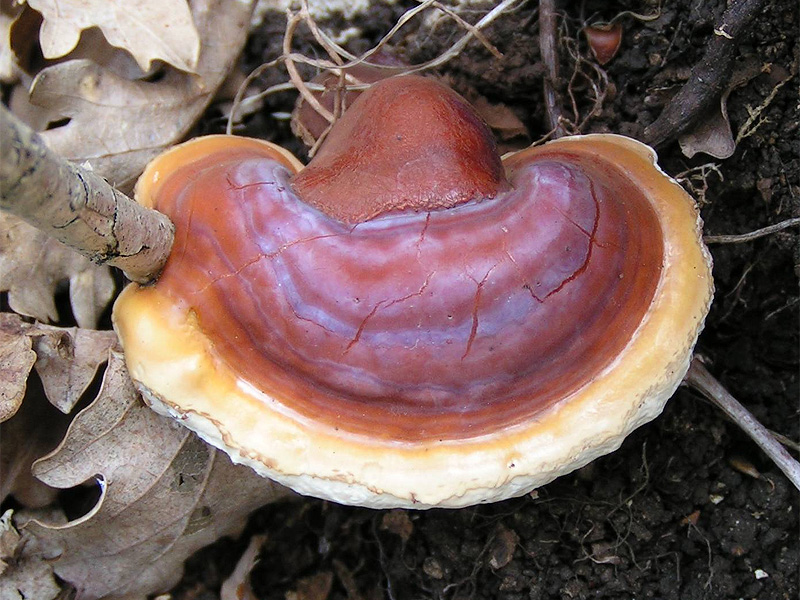|
Wallace Yew
The Wallace Yew is a tree in Elderslie, Scotland, Elderslie, Renfrewshire in Scotland. It stands on grassland said to be near the home of medieval Scottish leader William Wallace. In legend, Wallace is said to have hidden in its branches to escape an English patrol. The tree is noted in parish records as early as the 18th century and still stands in 2019. In more recent times, it has been damaged by fire and storms and is now dying of a ''Ganoderma'' fungus infection. The Renfrewshire Council has taken cuttings of the tree to be grown as a replacement. History The Wallace Yew is said to date back to the time of medieval Scottish independence leader William Wallace and to have been planted by him. This would make the tree some 700 years old. Doubts have been raised about the 700-year claim, though parish records from the 1700s record the presence of the yew which is described as "this ancient tree". The tree stands on a patch of grassland which is said to be near the site ... [...More Info...] [...Related Items...] OR: [Wikipedia] [Google] [Baidu] |
Elderslie, Scotland
Elderslie ( gd, Ach na Feàrna) is a village in the council area and historic county of Renfrewshire in west central Scotland. It chiefly serves as a commuter village, situated midway between the towns of Paisley and Johnstone, and lies west of Glasgow city centre. Elderslie is most famous as the assumed birthplace of Scottish hero Sir William Wallace, a knight born around 1270 who served as a military leader in the Wars of Scottish Independence before being captured and executed. History The origin of the name of "Elderslie" is Old English for "field of Elder Trees". It is assumed that William Wallace was born and grew up in Elderslie. On the site of the ancient Elderslie Castle there stands a monument to commemorate his life, and a commemoration ceremony is held every August. Also on the site is the Wallace Yew, an ancient yew tree and the Wallace Oak stood nearby until 1856. Auchenbathie Tower a few miles to the south is a site associated with William Wallace in an action ... [...More Info...] [...Related Items...] OR: [Wikipedia] [Google] [Baidu] |
William Wallace
Sir William Wallace ( gd, Uilleam Uallas, ; Norman French: ; 23 August 1305) was a Scottish knight who became one of the main leaders during the First War of Scottish Independence. Along with Andrew Moray, Wallace defeated an English army at the Battle of Stirling Bridge in September 1297. He was appointed Guardian of Scotland and served until his defeat at the Battle of Falkirk in July 1298. In August 1305, Wallace was captured in Robroyston, near Glasgow, and handed over to King Edward I of England, who had him hanged, drawn and quartered for high treason and crimes against English civilians. Since his death, Wallace has obtained an iconic status far beyond his homeland. He is the protagonist of Blind Harry's 15th-century epic poem '' The Wallace'' and the subject of literary works by Jane Porter and Sir Walter Scott, and of the Academy Award-winning film '' Braveheart''. Background William Wallace was a member of the lesser nobility, but little is definitely known of ... [...More Info...] [...Related Items...] OR: [Wikipedia] [Google] [Baidu] |
Ganoderma
''Ganoderma'' is a genus of polypore fungi in the family Ganodermataceae that includes about 80 species, many from tropical regions. They have a high genetic diversity and are used in traditional Asian medicines. ''Ganoderma'' can be differentiated from other polypores because they have a double-walled basidiospore. They may be called ''shelf mushrooms'' or bracket fungi. Etymology The name ''Ganoderma'' is derived from the Greek ''ganos''/γάνος "brightness, sheen", hence "shining" and ''derma''/δέρμα "skin". History The genus ''Ganoderma'' was established as a genus in 1881 by Karsten and included only one species, ''G. lucidum'' (Curtis) Karst. Previously, this taxon was characterized as ''Boletus lucidus'' Curtis (1781) and then ''Polyporus lucidus'' (Curtis) Fr. (1821) (Karsten 1881). The species ''P. lucidus'' was characterized by having a laccate (shiny or polished) pileus and stipe, and this is a character that Murrill suspected was the reason for Karsten's ... [...More Info...] [...Related Items...] OR: [Wikipedia] [Google] [Baidu] |
Renfrewshire Council
Renfrewshire () ( sco, Renfrewshire; gd, Siorrachd Rinn Friù) is one of the 32 council areas of Scotland. Located in the west central Lowlands, it is one of three council areas contained within the boundaries of the historic county of Renfrewshire, the others being East Renfrewshire to the east and Inverclyde to the west. It also shares borders with Glasgow, North Ayrshire and West Dunbartonshire, and lies on the southern bank of the River Clyde. The term Renfrewshire may also be used to refer to the historic county, also known as the County of Renfrew or Greater Renfrewshire, with origins in the 16th century. The larger Renfrewshire, containing Renfrewshire, Inverclyde and East Renfrewshire, remains in use as a registration county and lieutenancy area as well as a joint valuation board area for electoral registration and local tax valuation purposes. The town of Paisley is the area's main settlement and centre of local government and contains the historic county town, th ... [...More Info...] [...Related Items...] OR: [Wikipedia] [Google] [Baidu] |
Wallace Oak (Elderslie)
The Wallace Oak was an oak tree that stood in Elderslie, Renfrewshire. It is reputed to have seeded around 1100 and by the late 13th-century grew on the estate of Scottish independence leader William Wallace's father. Wallace is reputed to have hidden himself within the tree to escape from English soldiers. The tree was damaged by the removal of wood to make souvenirs in the 19th-century and it fell during a storm in 1856. Association with Wallace The oak is described as being at least 700 years old in a book of 1838, giving an approximate seeding date of 1100 AD. The tree stood at the west end of the village of Elderslie in Renfrewshire, to the north of the turnpike road. By the late 13th-century the tree came into the ownership of the father of Scottish independence leader William Wallace. William Wallace himself is said to have been born on the estate associated with the oak. In legend, Wallace is said to have used the branches of the tree to hide from an English patrol ... [...More Info...] [...Related Items...] OR: [Wikipedia] [Google] [Baidu] |
Conservation Foundation, UK
{{Unreferenced, date=March 2022 The Conservation Foundation, a registered charity in the UK, was founded on 5 March 1982 by Prof. David Bellamy and David Shreeve. Prof. Bellamy was the president of the Foundation. Dorothy Harris is now the Chair (2022), and David Shreeve is its executive director. Structure The charity is governed by a board of directors and supported by a council. Based in the Royal Geographical Society in Kensington, London, its current activities primarily cover the UK, but past projects have covered every continent on Earth. Activities The foundation runs a number of projects to engage the public in environmental issues. Most are aimed at communities around the UK, whilst others target specific regions of the UK or operate internationally. Funding The charity is supported through government funding, charitable trusts and foundations, individuals, and business sponsorship through corporate social responsibility Corporate social responsibility (CSR) is a fo ... [...More Info...] [...Related Items...] OR: [Wikipedia] [Google] [Baidu] |
David Bellamy
David James Bellamy (18 January 1933 – 11 December 2019) was an English botanist, television presenter, author and environmental campaigner. Early and personal life Bellamy was born in London to parents Winifred May (née Green) and Thomas Bellamy on 18 January 1933. He was raised in a Baptist family and retained a strong Christian faith throughout his life. As a child, he had hoped to be a ballet dancer, but he concluded that his rather large physique regrettably precluded him from pursuing the training. Bellamy went to school in south London, attending Chatsworth Road Primary School in Cheam, Cheam Road Junior School, and Sutton County Grammar School, where he initially showed an aptitude for English literature and history; he then found his vocation because of an inspirational science teacher, studying zoology, botany, physics, and chemistry in the sixth form. He gained an honours degree in botany at Chelsea College of Science and Technology (now part of King's College ... [...More Info...] [...Related Items...] OR: [Wikipedia] [Google] [Baidu] |
Elcho Castle
Elcho Castle () is located close to the south bank of the River Tay approximately four miles south-east of Perth, Scotland, in the region of Perth and Kinross. It was maintained by Clan Wemyss from its construction around 1560 until it was put into the care of the Secretary of State for Scotland in the early 20th century, though was not occupied for the entire time. In around 1830 it was re-roofed and a nearby cottage constructed. The castle has been a scheduled monument since 1920 on the grounds of being "a particularly fine example of a Medieval tower-house", and the cottage became a listed building in 1971 in recognition of its national importance. The castle is unusual in that it has both en suite guest accommodation like a mansion, but also a large number of gun loops. Description Elcho Castle consists of an approximately Z-plan tower house, with evidence of a surrounding wall (a barmkin). It is a multi-storied structure with a large square tower at once corner, and t ... [...More Info...] [...Related Items...] OR: [Wikipedia] [Google] [Baidu] |
Individual Trees In Scotland
An individual is that which exists as a distinct entity. Individuality (or self-hood) is the state or quality of being an individual; particularly (in the case of humans) of being a person unique from other people and possessing one's own needs or goals, rights and responsibilities. The concept of an individual features in diverse fields, including biology, law, and philosophy. Etymology From the 15th century and earlier (and also today within the fields of statistics and metaphysics) ''individual'' meant " indivisible", typically describing any numerically singular thing, but sometimes meaning "a person". From the 17th century on, ''individual'' has indicated separateness, as in individualism. Law Although individuality and individualism are commonly considered to mature with age/time and experience/wealth, a sane adult human being is usually considered by the state as an "individual person" in law, even if the person denies individual culpability ("I followed instruct ... [...More Info...] [...Related Items...] OR: [Wikipedia] [Google] [Baidu] |


